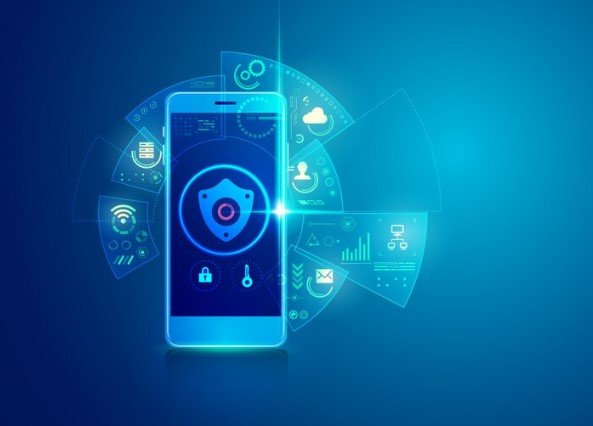
Understanding Data Spillage: What It Means for Security
Unveiling the Concept: Defining Data Spillage
Data spillage is an alarming yet increasingly common phenomenon in the digital age, characterized by the unintended exposure or transfer of sensitive information to an unsecured environment. This can occur through various means, from misdirected emails to unsecured backups, leading to potential breaches of confidentiality and security.
To illustrate, imagine a healthcare professional accidentally sending patient records to the wrong email address. This simple error, while seemingly minor, could have far-reaching implications for patient privacy and the integrity of the healthcare institution.
The Domino Effect: Consequences of Data Leakage
The impact of data spillage is multifaceted, with immediate repercussions that can escalate into long-term crises. Initially, it can lead to the unauthorized access of sensitive information, which can be exploited for identity theft, financial fraud, or corporate espionage. Over time, the repercussions may include legal liabilities, financial losses, and a tarnished reputation, which can be catastrophic for both individuals and organizations.
For instance, a major corporation experiencing a data leak might face immediate backlash in the stock market, followed by a series of lawsuits and a long-term decline in consumer trust. These outcomes are not just hypothetical; numerous high-profile cases in recent years have demonstrated just how severe the consequences of data spillage can be.

Not All Spills are Equal: Types of Data Spillage
Data spillage manifests in various forms, each with its unique characteristics and risks. One common type is the accidental exposure of data, such as sending sensitive information to the wrong recipient or leaving confidential files on a public server. Another form is the deliberate theft or leakage of data, often perpetrated by malicious insiders or hackers.
Each type of spillage carries its own set of challenges. For example, accidental exposure may stem from human error and can often be mitigated with better training and protocols. In contrast, deliberate data theft requires more robust cybersecurity measures and vigilant monitoring to detect and prevent.
The Many Faces of Data Spillage
Accidental Exposures: When Mistakes Lead to Leaks
Accidental data exposures are typically the result of human error, and they happen more often than one might think. Common scenarios include employees sharing sensitive information over unsecured networks, misconfigured cloud storage that leaves data accessible to the public, or even disposal of company hardware without properly erasing data.
These incidents, while usually unintentional, can have serious consequences. Consider a scenario where an employee accidentally uploads a confidential client list to a public forum. Such a mistake, while not malicious in intent, could lead to significant competitive harm and legal repercussions for the company.
Physical Data Gone Missing: Risks and Realities
The loss or theft of physical devices like laptops, USB drives, and hard drives is another significant source of data spillage. These incidents are particularly concerning because they involve tangible assets that can be easily misplaced or targeted by thieves.
The Digital Gateway: Electronic Data Leakage
In the digital era, the majority of data spillage incidents stem from electronic sources. The convenience and efficiency of digital data management also bring vulnerabilities. Cyber attackers often exploit these weaknesses, leading to data breaches. The primary contributors to electronic data leakage include inadequate network security, software vulnerabilities, and human error, such as clicking on malicious links or using weak passwords.
Preventing electronic data spillage is multifaceted. It involves deploying robust cybersecurity measures, regularly updating software to patch vulnerabilities, and ensuring secure data transmission protocols. Additionally, organizations must invest in advanced threat detection and response systems to quickly identify and mitigate potential breaches.
Building a Fortress: Key Strategies to Stop Data Leaks
Effective strategies to prevent data spillage are akin to building a fortress around your data. It starts with a strong foundation of cybersecurity policies and practices. These include regularly updating and patching systems to fix vulnerabilities, implementing stringent access controls, and continuously monitoring for suspicious activities. It also involves the deployment of firewalls, antivirus software, and intrusion detection systems as the first line of defense against external threats.
Another crucial aspect is ensuring secure data transmission. Encrypting data during transmission and at rest adds an additional layer of security, making it difficult for unauthorized parties to access or decipher sensitive information. Regular backup of data and having a robust disaster recovery plan also play a vital role in mitigating the risks associated with data spillage.
Access Denied: Limiting Data Reach
Limiting access to sensitive data is a critical step in preventing unauthorized disclosure or data spillage. This process, known as access control, ensures that only authorized personnel have access to specific data based on their role and necessity. Implementing role-based access control (RBAC) and the principle of least privilege are effective strategies in this regard.
To implement these effectively, organizations need to conduct regular audits of user access rights and adjust them according to changing roles and responsibilities. The use of authentication mechanisms like two-factor authentication (2FA) or multi-factor authentication (MFA) adds an additional layer of security, ensuring that the person accessing the data is indeed authorized to do so.

The Shield of Encryption: Safeguarding Data
Encryption acts as a shield for data security, making it a critical tool in the fight against data spillage. It transforms readable data into an unreadable format, which can only be reversed with the correct decryption key. This means that even if data is accessed or stolen, it remains useless to the attacker without the key.
Recent advancements in encryption technology include quantum-resistant algorithms and homomorphic encryption. Quantum-resistant algorithms are designed to be secure against the potential future threat of quantum computing, while homomorphic encryption allows data to be processed in its encrypted state, providing security during data analysis. Implementing these advanced encryption technologies ensures a higher level of security for sensitive data.
Teaching the Troops: The Power of Awareness
Employee education is a cornerstone of data security. Many data breaches result from employee errors, such as falling for phishing scams or mismanaging data. Therefore, regular training sessions on cybersecurity best practices, recognizing phishing attempts, and proper data handling procedures are essential.
These training sessions should be interactive and updated frequently to cover the latest threats and security practices. Simulated phishing exercises can be particularly effective in teaching employees to identify and report suspicious emails. Additionally, creating a culture where security is everyone’s responsibility encourages employees to be more vigilant and proactive in identifying potential security risks.
Spotlight on Solutions: Tools and Technologies
ZenGRC: A Beacon in Data Security
In the digital age, where data is as valuable as currency, safeguarding it becomes paramount. ZenGRC, a governance, risk management, and compliance software, has emerged as a pivotal tool in preventing data spillage. This platform stands out for its comprehensive approach to data security, integrating seamlessly into an organization’s existing framework.
Clients who have implemented ZenGRC speak highly of its efficiency and user-friendliness. A common thread in their testimonials is the platform’s ability to simplify complex compliance processes and provide clear visibility into their security posture. For instance, one user from a financial services company praised ZenGRC for streamlining their compliance activities, which significantly reduced the risk of data spillage.
Centraleyes: Vision for Better Security Management
Centraleyes takes a different but equally effective approach to security management. It’s not just a tool but a vision for proactive security. This platform distinguishes itself with its ability to collate and analyze vast amounts of security data, offering a clear, actionable plan to mitigate risks.
Expert opinions often highlight Centraleyes’ capability to turn abstract security concepts into tangible action points. Case studies from various industries show that Centraleyes has helped organizations not only in identifying potential security gaps but also in prioritizing them based on risk severity. This prioritization is crucial for efficient resource allocation and effective risk management.
When the Dam Breaks: Dealing with Data Spillage
Real-World Chaos: A Data Spillage Case Study
A detailed analysis of a real-world data spillage incident reveals a cascade of failures. One notable case involved a large retail corporation where sensitive customer data was exposed due to outdated security protocols. The breach was a result of multiple factors: inadequate employee training, outdated security software, and lack of regular audits.
The aftermath was devastating – loss of customer trust, legal repercussions, and significant financial losses. The key lesson learned here was the importance of a proactive, rather than reactive, approach to data security. Regular updates, employee education, and robust incident response plans are crucial.
The Ripple Effects: Understanding the Broader Impact
Data spillage has far-reaching consequences beyond the immediate financial losses. For individuals, it can mean exposure of personal information, leading to privacy violations and potential identity theft. For businesses, the impact extends to tarnished reputation, legal liabilities, and loss of customer trust.
Infographics and diagrams can effectively illustrate these ripple effects. A well-designed infographic can show the direct impact on the individual, like identity theft, and the indirect consequences for businesses, such as increased regulatory scrutiny and loss of market value.
The Invisible Threats: Understanding Indirect Causes
Phishing: The Hidden Hand in Data Spillage
Phishing attacks are a significant indirect cause of data spills. These deceptive practices trick individuals into revealing sensitive information, often leading to unauthorized access to secure systems. Understanding the mechanics of phishing is crucial in combatting it.
Advice on recognizing phishing attempts often includes being wary of unsolicited communications, especially those requesting sensitive information, and verifying the authenticity of the sender. Education and awareness campaigns within organizations can significantly reduce the susceptibility to such attacks.
Identity Theft: A Sinister Outcome of Data Spills
The link between data spills and identity theft is direct and destructive. Personal information obtained from data breaches can be used to impersonate individuals, leading to financial fraud and legal complications for the victims.
Preventive measures include regular monitoring of financial transactions, using strong, unique passwords for online accounts, and being cautious about sharing personal information. If identity theft occurs, it’s crucial to act swiftly – report to relevant authorities, inform financial institutions, and consider services that help in identity recovery.

Spam and Scams: The Data Spillage Connection
Spam emails and scams are often overlooked as a consequence of data spillage. However, these unsolicited communications can be a precursor to more serious data breaches. They often contain malicious links or attachments that can compromise data security.
Wrapping Up: Strengthening Defenses Against Data Spillage
In our journey through the intricate landscape of data spillage, we’ve uncovered the multifaceted nature of this digital peril. From accidental leaks to intentional breaches, the ways in which sensitive data can fall into the wrong hands are numerous and varied. It’s clear that in our increasingly interconnected world, the security of data is not just a luxury but an absolute necessity.
Conclusion: The Path to Enhanced Data Security
Reflecting on the key points discussed, it’s evident that data spillage, in all its forms, presents a formidable challenge. Whether it’s through accidental exposure due to human error or the more sinister avenues of deliberate theft and hacking, the risks are ever-present. The examples and scenarios explored highlight the real-world implications of such breaches, from legal and financial consequences to the erosion of trust and reputation.
The ongoing nature of data security is a crucial aspect of this discussion. It’s not a one-time fix but a continuous process that evolves with the changing technological landscape. This means staying ahead of emerging threats, regularly updating security protocols, and fostering a culture of awareness and vigilance within organizations.
Strengthening defenses against data spillage involves a comprehensive approach. It requires not only robust technological solutions, such as encryption and secure data storage but also training and educating employees about best practices in data handling. Regular audits and updates to security policies are necessary to address new vulnerabilities. Moreover, in cases where physical data is involved, ensuring secure storage and disposal methods is vital.
In conclusion, the path to enhanced data security is multifaceted and ongoing. It necessitates a blend of technological, organizational, and educational strategies. As we navigate this path, the goal remains clear: to safeguard our data and protect it from the myriad of threats in the digital world. Only through a sustained and holistic approach can we hope to stay one step ahead in this ever-evolving battle against data spillage.

As a seasoned professional with a unique blend of skills in Computer Design and Digital Marketing, I bring a comprehensive perspective to the digital landscape. Holding degrees in both Computer Science and Marketing, I excel in creating visually appealing and user-friendly designs while strategically promoting them in the digital world.

